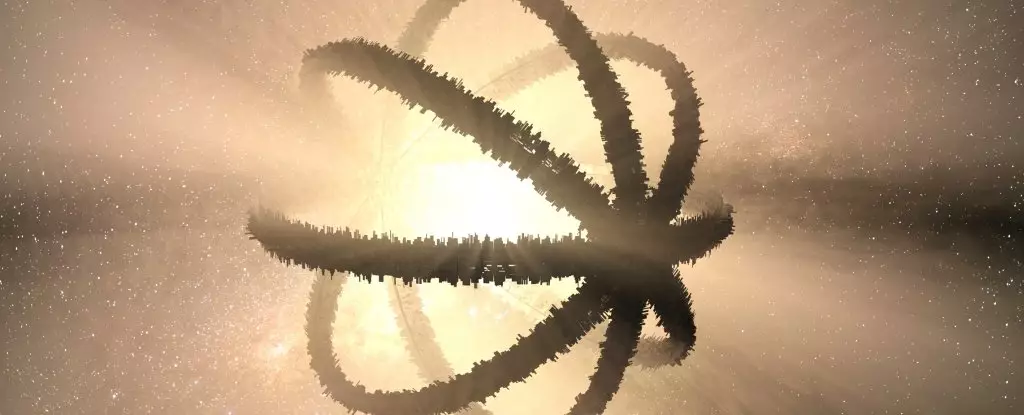The search for extraterrestrial intelligence has captivated scientists and enthusiasts alike for decades. One of the intriguing concepts in this search is the idea of Dyson Spheres. These hypothetical megastructures, first proposed by Freeman Dyson in 1960, suggest that advanced civilizations could harness the power of their host stars by surrounding them with a matrix of spacecraft. Such a structure would likely emit excess infrared radiation, making them detectable from Earth.
Recently, seven stars have been identified as potential candidates for Dyson Spheres due to their infrared radiation signatures. However, a new paper has proposed a different explanation for this phenomenon – dust-obscured galaxies. These galaxies, when viewed from a distance, may exhibit similar infrared excess, leading to confusion in the search for alien megastructures.
Project Hephaistos, which examined a sample of 5 million stars detected by the Gaia satellite, revealed the seven M-type stars that displayed the expected infrared excess. Despite initial excitement, further analysis using data from 2MASS and WISE, as well as radio surveys like VLASS, hinted at a different conclusion. Three of the candidates, labeled A, B, and G, were found to have radio sources nearby, suggesting they are more likely extra galactic phenomena than Dyson Spheres.
The presence of dust in these distant galaxies could explain the observed infrared excess, as the dust clouds obscure most radiation except in the infrared spectrum. Candidate G, for example, displayed characteristics of a distant quasar, emitting large amounts of radiation but being mostly obscured by dust. This model also fits with candidate B, which is believed to be a distant galaxy in close line of sight with an M-type dwarf star.
Despite these findings, four of the candidates have yet to be matched with radio sources. While this does not rule out the possibility of Dyson Spheres, it highlights the need for further research and higher resolution radio surveys. The tantalizing idea of alien megastructures remains elusive, with no concrete evidence to support it at this time.
The hunt for Dyson Spheres and other signs of alien intelligence continues to be a fascinating subject for astronomers and SETI researchers. While the recent discoveries may have dampened hopes of finding these megastructures around distant stars, the search for extraterrestrial life persists. Only time and further research will reveal the truth behind these enigmatic infrared signatures in the cosmos.


Leave a Reply